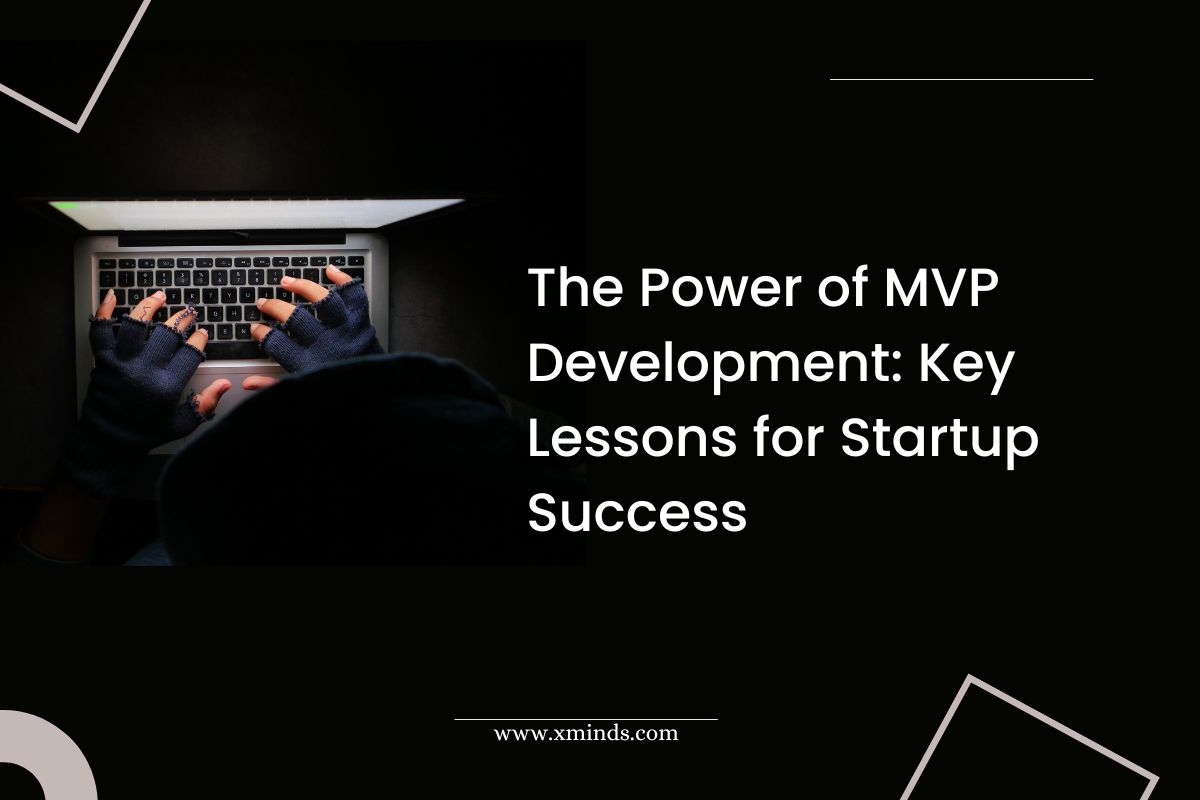The Power of MVP Development: Key Lessons for Startup Success

In the highly competitive world of startups, time and money are precious resources that can make or break a company. Building a successful product from scratch can be a daunting and expensive process, and many startups fail before they even get off the ground. However, there is a solution that can help startups overcome these challenges: MVP development.
What is MVP development?
MVP, or Minimum Viable Product, is a development strategy that involves building a basic version of a product with only the essential features needed to solve a specific problem. This approach allows startups to launch their product faster and at a lower cost, while also gathering valuable feedback from customers to inform future development.
The Benefits of MVP Development for Startups
Faster time to market:
Developing a full-featured product from scratch can take months or even years. With MVP development, startups can launch their product faster by focusing on the core features that solve the most pressing customer problem. This allows startups to get their product in front of customers sooner, which can give them an advantage in the market.
Lower development costs:
Developing a full-featured product can be expensive, especially for startups with limited resources. MVP development allows startups to focus on building only the essential features needed to solve a specific problem, which can significantly reduce development costs. This approach also allows startups to test their assumptions and gather feedback before investing more resources into product development.
Ability to test assumptions and gather feedback:
MVP development allows startups to test their assumptions about the market and the problem they’re solving. By launching an MVP and gathering feedback from customers, startups can validate their assumptions and make informed decisions about future product development. This approach also helps startups avoid the risk of building a product that nobody wants.
Reduced risk of failure:
Developing a full-featured product carries a significant risk of failure, especially for startups with limited resources. By launching an MVP, startups can reduce the risk of failure by testing the market and validating their assumptions before investing more resources into product development.
Improved chances of securing funding:
Investors are more likely to invest in startups that have a clear understanding of their market and customers. By launching an MVP and gathering feedback from customers, startups can demonstrate their market knowledge and increase their chances of securing funding for future development.
Common Mistakes to Avoid while Developing MVP
Here are some common mistakes to avoid when developing an MVP:
Focusing on features rather than user needs
One of the biggest mistakes startups make when building an MVP is focusing too much on adding features rather than addressing the core problem that their product is trying to solve. It’s important to prioritize the features that are essential to solving the problem and delivering value to users, rather than trying to build a product that does everything.
Overcomplicating the MVP
Another mistake is overcomplicating the MVP by adding too many features or trying to create a perfect product from the start. This approach can lead to delays in launching and higher costs, and it can also prevent you from testing and validating your assumptions early on.
Delaying the launch due to perfectionism
Perfectionism is another common mistake that can prevent startups from launching their MVPs. Waiting for the product to be perfect before launching can lead to missed opportunities and lost momentum, as well as a failure to gather feedback and iterate quickly.
Ignoring customer feedback
Ignoring customer feedback is a mistake that can be fatal to your MVP. User feedback is crucial for improving your product and identifying areas for growth. Ignoring this feedback can lead to a product that doesn’t meet customer needs or solve their problems, and it can also cause users to lose interest and move on to competitors.
Scaling too quickly without validating the product
Scaling too quickly without validating the product is a mistake that can lead to a lack of resources, higher costs, and the inability to iterate quickly. It’s important to validate your product and gather feedback before scaling, to ensure that you’re building something that people want and are willing to pay for.
By avoiding these common mistakes, you can increase your chances of success when developing your MVP. Remember to focus on user needs, keep your MVP simple, launch early and gather feedback, listen to your customers, and validate your product before scaling.
Key Takeaways from MVP Development Success Stories
While MVP development can be challenging, many startups have successfully launched MVPs and gone on to achieve great success. Here are some lessons learned from successful MVP development:
Focus on solving a specific problem:
Successful MVP development requires a laser focus on solving a specific problem for a specific group of customers. By identifying the core features that solve this problem and prioritizing them over other features, startups can launch an MVP that meets a real customer need.
Get feedback early and often:
Successful MVP development relies on getting feedback from customers early and often. By launching an MVP and gathering feedback from customers, startups can validate their assumptions and make informed decisions about future product development.
Be willing to iterate:
Successful MVP development requires a willingness to iterate and make changes based on customer feedback. Startups must be open to changing their product based on what they learn from customers, even if it means pivoting in a new direction.
Keep it simple:
Successful MVPs are often simple and focused on solving a specific problem. Startups must resist the temptation to add too many features and instead focus on the core features that solve the most pressing customer problem.
Build a strong team:
Successful MVP development requires a strong team with a diverse set of skills and experiences. Startups must build a team that is passionate about the problem they’re solving and has the skills needed to build and launch an MVP.
Stay agile:
Successful MVP development requires agility and the ability to adapt to changing circumstances. Startups must be willing to pivot in a new direction if necessary and make changes quickly based on customer feedback.
Top 5 examples of MVP development
Airbnb: Airbnb’s MVP was a simple website that allowed people to rent out their spare rooms to travelers. The website solved a specific problem for both hosts and travelers – hosts could make extra money by renting out their space, while travelers could find affordable accommodations in a new city. Airbnb received feedback from early users and iterated their product, eventually becoming the popular travel platform it is today.
Uber: Uber’s MVP was a simple mobile app that allowed users to request a ride from a nearby driver. The app solved a specific problem – the need for a convenient and affordable ride-sharing service. Uber received feedback from early users and iterated their product, eventually becoming the popular ride-sharing platform it is today.
Instagram: Instagram’s MVP was a simple photo-sharing app that allowed users to apply filters to their photos and share them with friends. The app solved a specific problem – the need for a simple and intuitive photo-sharing platform. Instagram received feedback from early users and iterated their product, eventually becoming the popular social media platform it is today.
Facebook: Facebook’s MVP was a simple website that allowed users to create profiles and connect with friends. The website solved a specific problem – the need for a more personal and interactive online experience than traditional search engines and directories. Facebook received feedback from early users and iterated their product, eventually becoming the popular social media platform it is today.
Amazon: Amazon’s MVP was a simple online bookstore that allowed users to purchase books online. The website solved a specific problem – the need for a more convenient way to purchase books, especially for those who lived far from traditional bookstores. Amazon received feedback from early users and iterated their product, eventually becoming the popular e-commerce platform it is today.
These five examples show how successful MVP development can lead to the creation of popular and successful products. By focusing on solving a specific problem, getting feedback from early users, and iterating their products based on that feedback, these startups were able to launch successful MVPs and grow their businesses.
Conclusion
In conclusion, MVP development is essential for startups because it allows them to test their product ideas and validate them with early customers without investing too much time and money upfront. By launching an MVP, startups can gather valuable feedback from early users and use it to improve their product and iterate quickly. While there are certainly challenges associated with MVP development, such as managing expectations and balancing resources, the benefits can far outweigh the costs. The success stories of companies like Airbnb, Uber, Instagram, Facebook, and Amazon demonstrate the power of MVP development and how it can lead to the creation of popular and successful products. By applying the lessons learned from these success stories, startups can increase their chances of launching a successful MVP and ultimately building a successful business.
Want to build an MVP for your startup plan? Team Xminds is happy to help! Contact us now!
Related articles




One comment